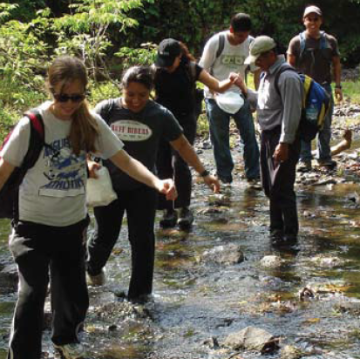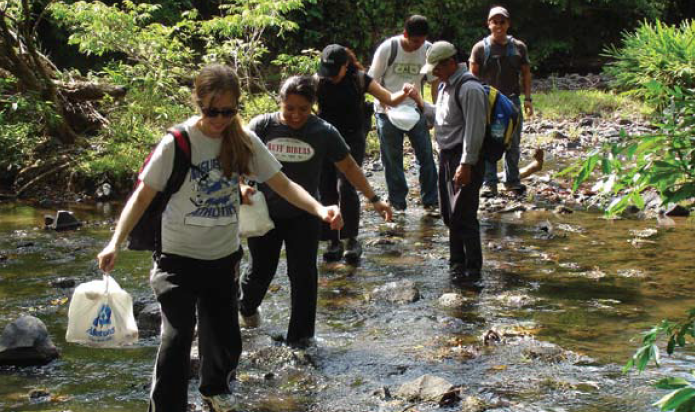
Engineering at a Jesuit University
Reflections on GC35
As the new dean of the School of Engineering here at Santa Clara University, my first year has been marked by some personal observations and some recent broader events. Among the key observations is my assessment of the role of engineering in Jesuit education in general, and its role at SCU in particular.
Among the notable events I witnessed was the occurrence of the Jesuit’s General Congregation 35 (GC35) during the early part of 2008 and the subsequent announced departure of Paul Locatelli, S.J., after 20 years as president of SCU. In the following I will provide my impressions of how this range of issues impacts my view of engineering at SCU and how we might move forward in the context of a Jesuit liberal arts institution.
My first observation of engineering at SCU was the rather small size of its undergraduate class. Traditionally, engineering has represented 15 percent of the undergraduates here—a small percentage in my opinion—having just arrived from my previous institution where the percentage was 25 percent. Practically, this means that only 1 in 7 of the undergraduates are engineers. In the context of a liberal arts school, I suspect there are many conversations occurring around and about the campus among the undergraduates that would not include engineers or their inputs to the conversation. A second observation was that, of the 28 Jesuit colleges and universities in the U.S., there are only eight which offer the engineering option. Why does the smallness of both of these numbers surprise me?
First, it is clear that Jesuit education is deeply involved in the life of the mind. This has been true from the very beginning when the first Jesuit schools were formed by St. Ignatius and his companions, and the teaching of arts and sciences was the central theme. Second, Jesuit education, after having engaged the mind, seeks to touch the heart, so that students feel a sense of compassion towards those less fortunate. However, it does not stop there, for the desired outcome is achieved only when intellect and heart guide the hands towards action, in a cycle where thoughts become words, and words become deeds. This final part of the cycle, where actions become manifest and impact people, is actually, in my opinion, a main tenet of engineering. I do not wish to imply that engineering is the only answer, for there are many possible ways to impact lives, but if such action is a goal, then engineering is certainly an answer. Furthermore, if an additional goal is to lift immigrants, first-generation families, and the poor (GC35, Decree 1) to a higher standard of living, then engineering is certainly a rocket launch in that direction, as it has been for countless individuals, myself included.
In GC35 there are several themes which are of direct consequence to engineering. However, these must be taken in the context of SCU’s location at the heart of Silicon Valley, arguably one of the most innovative, beautiful, and affluent locations in the world. Here, contrasts abound, for while incredible wealth has been created up and down the Valley, such wealth is not well distributed among the local inhabitants, and we witness top-performing school districts being located mere miles from grossly under-performing ones. The Valley has been home to many outstanding engineers from SCU, educated in the finest Jesuit tradition, several of whom have risen to positions of high accomplishment. Like the rest of the campus, we attract students who feel the pull of faith and action. How then does engineering fit to the specific calls of GC35?
The approach to advance the ideas of GC35 and engineering that I envision lies in three directions: (1) a voice within the University, (2) service to the Valley, and (3) engagement with the world. Let me examine each below.
Above, I have commented on the small size of the engineering department within SCU and within the 28 Jesuit institutions. I believe that engineering can advance the Jesuit cause by its ability to produce products, services, and devices that directly improve the lives of many. My favorite current example is that of the cell phone. Initially invented to allow ease of communication, this leapfrog technology has bypassed the infrastructure of land lines and opened up vast regions in developing countries to a new form of communication. A poor farmer can now price products competitively with the push of a button, making wise decisions based on market conditions. It is but a small example of how technology can fight against the forces of globalization. The awareness and discussion of examples like this will allow our students to see the positive impact of engineering on the lives of many.
On the other hand, engineering is not a cheap endeavor. The engineering curriculum is marked by a significant number of hands-on laboratories that require considerable capital investment, and even then can handle only a limited number of students primarily due to the quality of instruction and the required safety in the class or laboratory. With 38 full-time faculty at SCU, our system is becoming saturated as we attempt to increase engineering enrollment, with the consequence that new students will find a less than ideal experience unless faculty lines and facilities can be proportionately increased. This will require a concerted effort by the administration to move in this direction, providing the quantity and quality of resources that this will require.
The second thrust will be to nurture and increase our engagement with the Silicon Valley. We are extremely fortunate to have the location that we do, as nearly ideal as I can imagine, in the most innovative place on earth. Graduates from engineering who remain and work in the Valley have an opportunity to impact the most exciting and challenging problems that the country and the world now face. In particular, GC35 Decree 3 speaks to the care of the environment and the protection of the world’s resources for all of the world’s people. The Silicon Valley has moved into the forefront of this effort with renewable energy becoming a primary direction for both established companies whose past products were aimed at the semiconductor industry, and numerous startups. The integrated circuit, the computer, and the Internet have greatly changed the world, but we now sit at the cusp of a new thrust which will have even greater impact upon the planet and its health, namely the fight against global warming.

Our efforts are occurring at both the undergraduate level and graduate levels. Our undergraduates have benefited from participating in the DOE-sponsored Solar Decathlon 2007 contest, and we currently have a new group of students actively engaged in the SD 2009 effort. This new generation of engineers will be fully engaged with the Valley and its companies as renewable energy takes hold. The global impact can be enormous, far exceeding the impact of the Internet. At the graduate level, we are initiating new efforts in quantifying sustainability, which will use the analytic thinking and analysis skills for which engineers are so well trained, to make quantitative and measurable our impact upon the environment. Additionally, at the graduate level we are initiating a new graduate core which will allow the Valley’s engineers to acquire a set of values more closely aligned to the Jesuit mission.
Our third initiative which fits to GC35, Decree 3, is the engagement with the world at large and China in particular. In the past, SCU engineering has had a particular connection to El Salvador through the CASA program and various hands-on senior design projects designed to improve local communities. Examples include intelligent solar-powered water pumping systems and easily produced humanpowered transportation systems. Lately we have expanded these projects to include recent water distribution projects in rural Nicaragua and water purification systems for India. We have current requests to become engaged in projects with Africa in a similar vein and we are actively engaged in discussion on the costs and logistics of this effort. This thrust can be viewed as part of our Jesuit-inspired solidarity with the poor.
However, to all engineers, a stunning development in our field is the recent meteoric rise of China as it re-emerges onto the world stage. If one considers the fact that for the first 1800 of the last 2000 years, the combined economies of India and China exceeded more than 50% of the world’s economy, the most recent 200 years, with colonialism and communism driving the combined economies into single digit performance, seem an aberration rather than the norm. In any event, China, by sheer population and sheer will, has indicated that it will become a dominant player from this time forward. SCU, like the rest of the U.S., cannot be a mere observer to this development, but must participate and be engaged in its evolution, more so given our Jesuit values. To this end we have recently visited five campuses in China and intend to establish working relationships with two of these. We also plan to take a group of faculty for a two-week immersion to the Beijing Center to be more fully engaged in the understanding of China.
Finally, in the international arena we have recently reciprocated visits from Jesuit schools in Cordoba, Argentina, and Montevideo, Uruguay. While a global Jesuit network exists, it has been largely untapped to date. Thus, engineering will be finding collective ways to improve collaborations between SCU and selected foreign Jesuit schools. Any progress to positively impact or improve a foreign campus will surely pay dividends in the lives of the locals, and it is in this spirit that we have begun our engagement.
Lastly, there is a final new unknown with the arrival of a new SCU president. Will engineering be a priority? Will it remain small or grow? What are the costs of expansion? Who should be our targeted students? How affordable is SCU education to recent immigrants? These are just a few of the difficult questions to which answers will come slowly and, of course, be impacted by a new president. As dean, I can only argue that whatever the outcome, engineering has much to contribute to the Jesuit mission and GC35 can bring us one step closer to that reality.